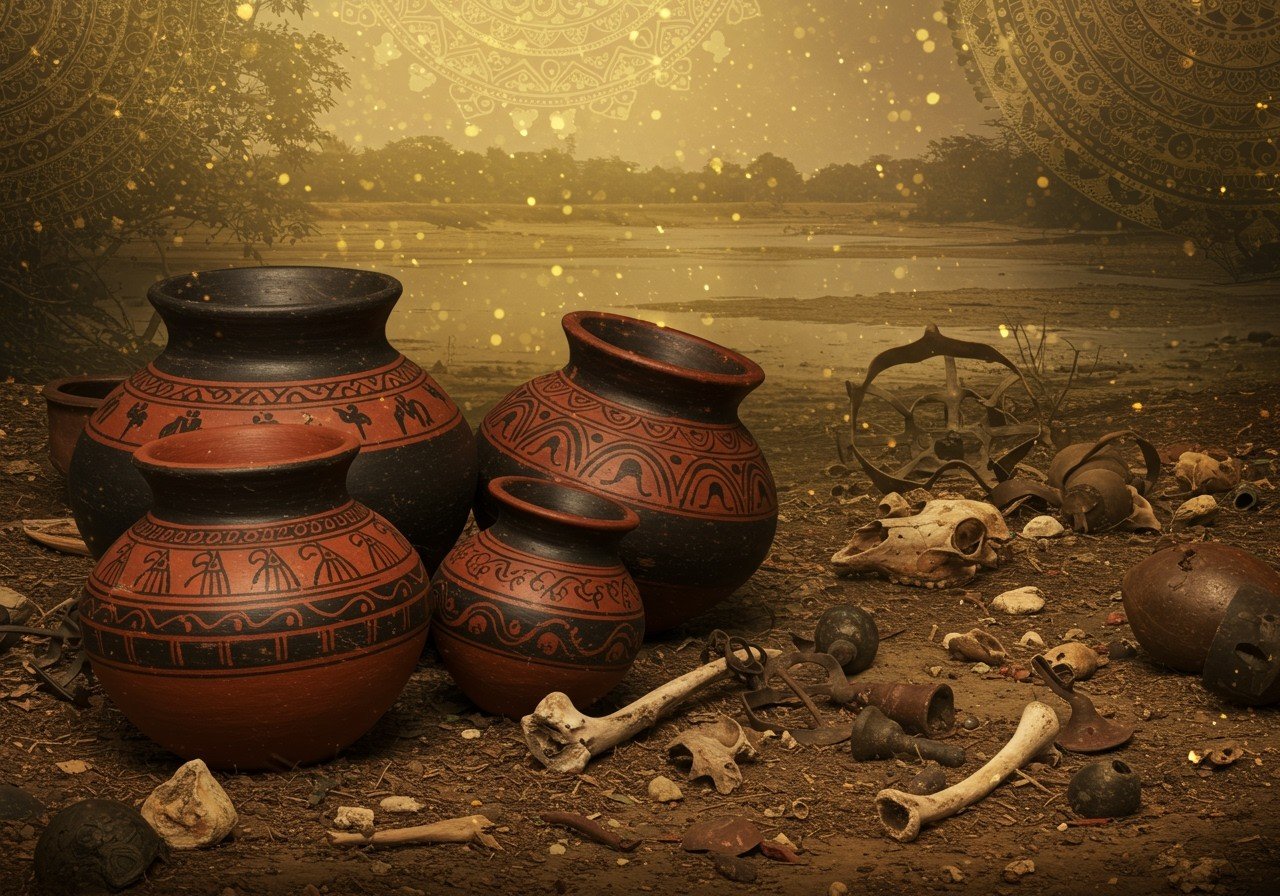
The ancient site of Adichanallur, located in Tamil Nadu, India, offers a captivating glimpse into prehistoric civilizations. A key discovery at Adichanallur is the black and red ware pottery, providing insights into the cultural and technological advancements of early societies. This article delves into the significance of this pottery in Adichanallur and other archaeological sites, examining its historical context, distribution, and cultural implications.
Historical Background of Adichanallur
Adichanallur, situated in the Thoothukudi district, stands as a prominent archaeological site with discoveries dating back to the Iron Age. Early excavations in the early 20th century, led by Alexander Rea, unearthed significant artifacts like burial urns, skeletal remains, and various types of pottery, including red ware, black ware, and the unique black-and-red ware. These findings contribute significantly to our understanding of ancient South Indian lifestyles, burial practices, and the unique black-and-red ware urns used for burials. The Archaeological Survey of India (ASI) plays a crucial role in preserving and researching this historically rich site. Other artifacts include copper bangles, copper earrings, iron spearheads, terracotta lids and vessels, bronze animal figures, iron implements, and gold ornaments. Pottery from various levels has undergone OSL dating.
Black and Red Ware Pottery: A Distinctive Style
Black and red ware pottery possesses distinctive characteristics, notably its black interior and red exterior. This unique coloration arises from specialized kiln firing techniques. Common forms include bowls, pots, and urns, often adorned with various patterns. These pottery pieces served both utilitarian and ceremonial purposes in daily life. Regional variations in style and decoration reflect the diverse cultural influences across India.
Significance of Black and Red Ware in Adichanallur
The presence of black and red ware pottery in Adichanallur showcases the technological skills and craftsmanship of the ancient inhabitants. It played a significant role in trade and interactions with other civilizations. The findings from Adichanallur offer valuable insights into ancient dietary habits, storage practices, and domestic life. Moreover, the pottery held symbolic meanings and played a role in burial rituals, highlighting its cultural significance.
Black and Red Ware Sites Across India
Other notable sites in India where black and red ware pottery has been found include Kodumanal, Arikamedu, and Keezhadi. These sites exhibit both similarities and differences in pottery styles and techniques. The distribution of this pottery helps researchers trace ancient trade routes and cultural exchanges. Discoveries from these sites contribute significantly to our understanding of South Indian archaeology.
Want to experience a touch of ancient pottery tradition in your modern life? Poojn.in offers a unique collection of handcrafted clay dinnerware, inspired by India’s rich ceramic heritage.
Explore our Clay Dinner Sets
Discover Traditional Clay Thalis
Technological and Cultural Implications
Black and red ware pottery represents technological innovation in ancient pottery production. It reflects the socio-cultural dynamics of the time, including trade and interactions with neighboring regions. The pottery played a role in early urbanization and the development of complex societies. It holds cultural significance in terms of art, symbolism, and rituals. Interdisciplinary research methods, encompassing archaeology, anthropology, and material science, are employed to study black and red ware pottery.
Conclusion
The black and red ware pottery from Adichanallur provides invaluable insights into ancient South Indian societies. It reflects their advanced technological skills, artistic expressions, and cultural practices. These artifacts showcase the craftsmanship of our ancestors and their complex socio-cultural dynamics. By preserving and studying these archaeological treasures, we honor our rich heritage and deepen our understanding of the past. Explore more about ancient Indian temples and cultural heritage on poojn.in.
Ananthapura Lake Temple
Preserving Dravidian Temples


